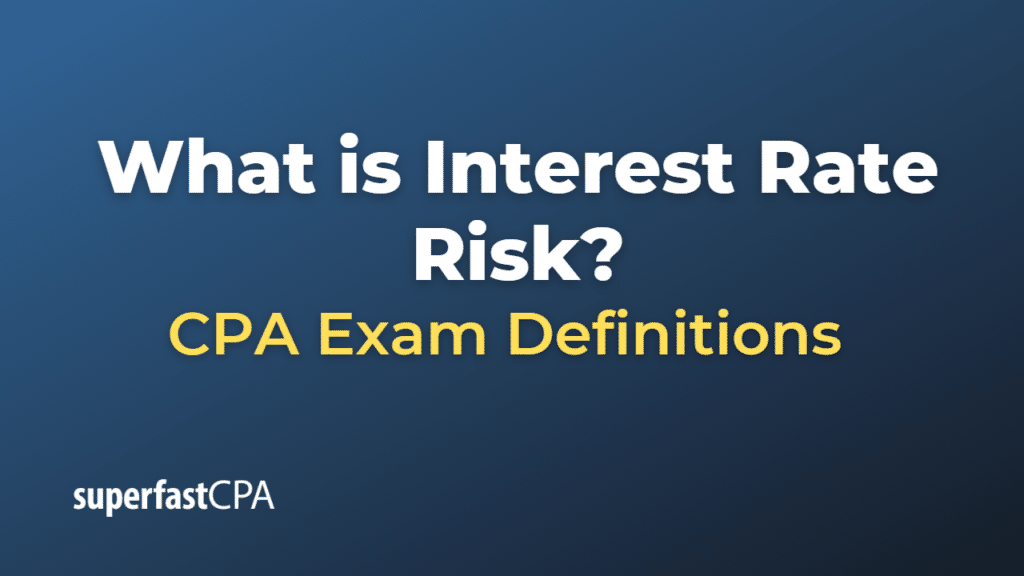Interest Rate Risk
Interest rate risk is the potential for investment losses that result from a change in interest rates. If interest rates change, it can have a significant impact on a variety of financial instruments, including bonds, loans, and other fixed income securities.
There are several types of interest rate risk:
- Price Risk: When interest rates rise, the price of existing fixed-income securities falls because newer securities are issued with the higher rate and are therefore more attractive to investors. This means that if an investor needs to sell a bond before its maturity, they may receive less than the principal they initially invested.
- Reinvestment Risk : This is the risk that when a bond’s interest payments (coupons) or a bond’s principal at maturity are reinvested, they will earn less than the original bond yield because interest rates have fallen.
- Cash Flow Risk: This is more relevant to adjustable-rate bonds or loans where the cash flows are uncertain due to changes in interest rates.
- Yield Curve Risk: This is the risk of experiencing an adverse shift in market interest rates associated with investing in a fixed income instrument. The risk is associated with either a flattening or steepening of the yield curve, which is a graphical representation of the term structure of interest rates.
Companies and investors will use various strategies, including the use of derivatives like interest rate swaps and options, to manage their exposure to interest rate risk. How much interest rate risk an investor is willing to take on will depend on their risk tolerance, investment goals, and time horizon.
Example of Interest Rate Risk
Let’s explore interest rate risk with an example of bonds, which are fixed income securities.
Let’s say an investor purchases a bond for $1,000 with a fixed interest rate (coupon rate) of 5% per year, so the bond pays $50 per year in interest. If market interest rates remain the same, the investor can expect to receive $50 per year and then get the $1,000 principal back when the bond matures.
But what happens if market interest rates rise to 6%? New bonds being issued would pay $60 per year on a $1,000 investment. Suddenly, the bond our investor holds (which only pays $50 per year) is less attractive. If the investor wanted to sell the bond before it matures, they may have to sell it for less than $1,000 in order to compete with new bonds in the market. This is known as price risk and the investor could potentially realize a capital loss.
On the other hand, consider reinvestment risk. Suppose the investor plans to reinvest the $50 annual interest payments to generate more income. However, if interest rates fall to 4%, when the investor receives the $50 in interest and goes to reinvest that money, they can only earn 4% instead of the 5% the original bond is paying. This reduces their potential income.
Both of these examples highlight how changes in interest rates can negatively affect the value of fixed income securities and the income they generate, which is essentially the interest rate risk.













